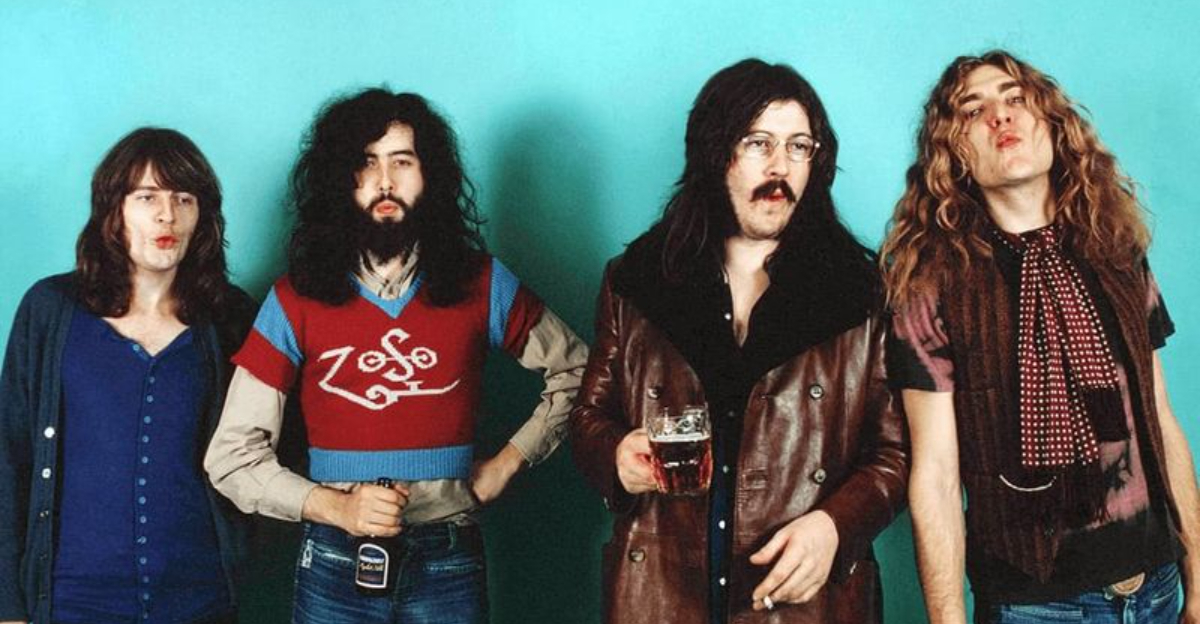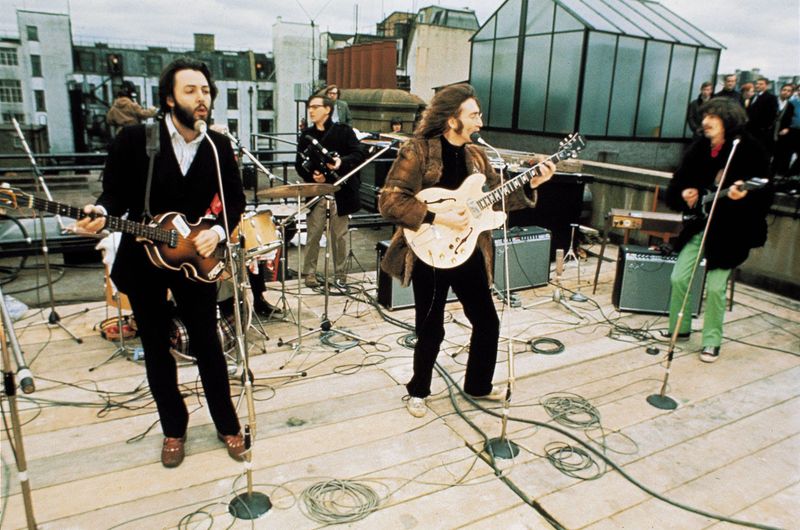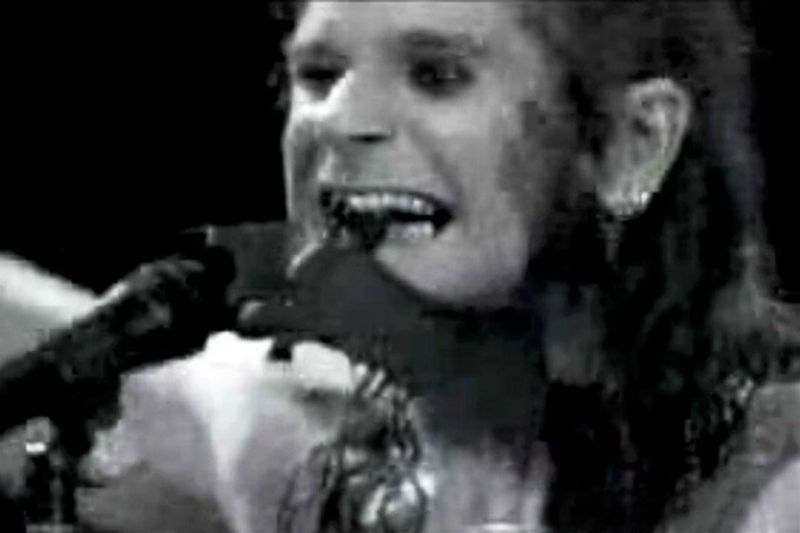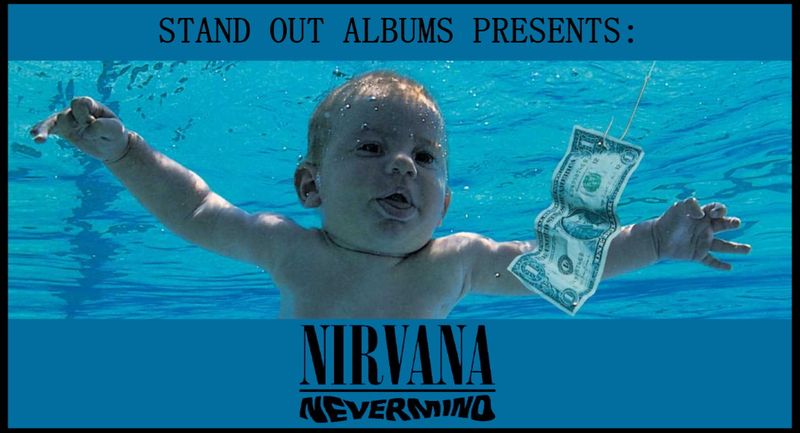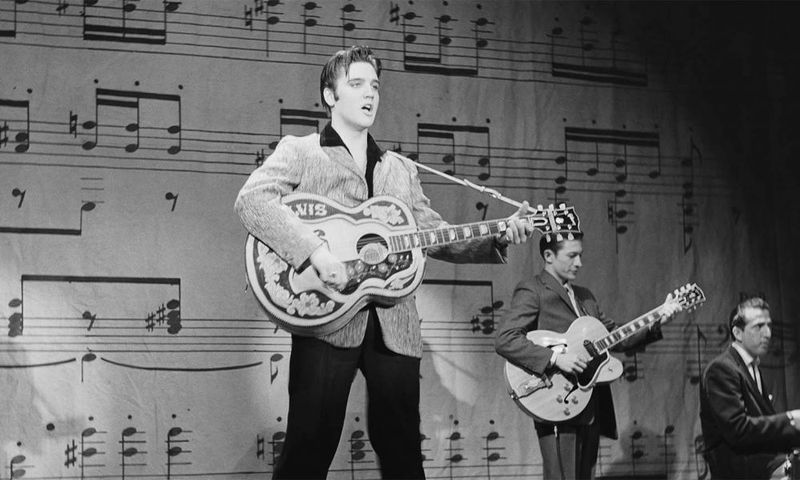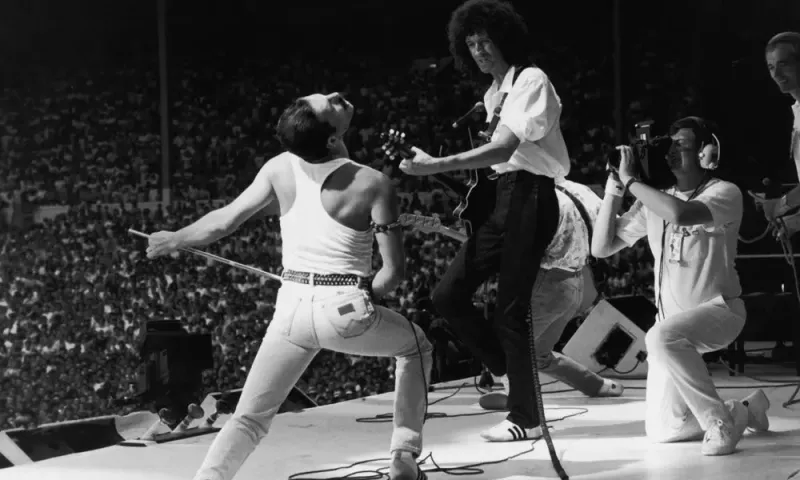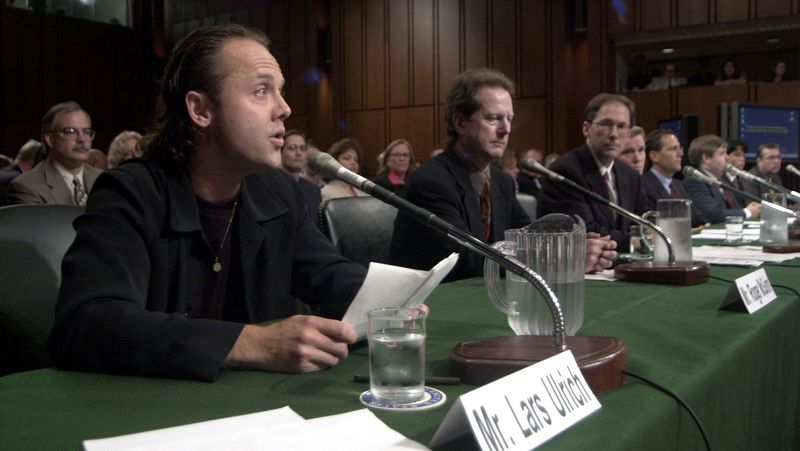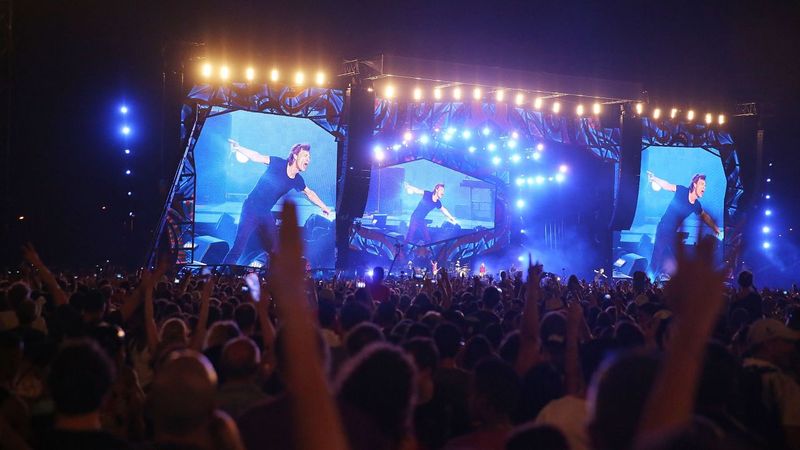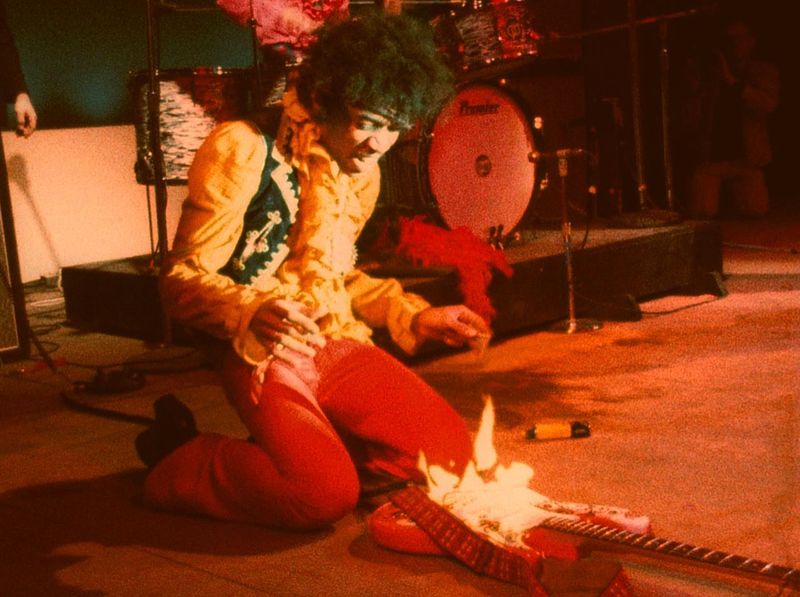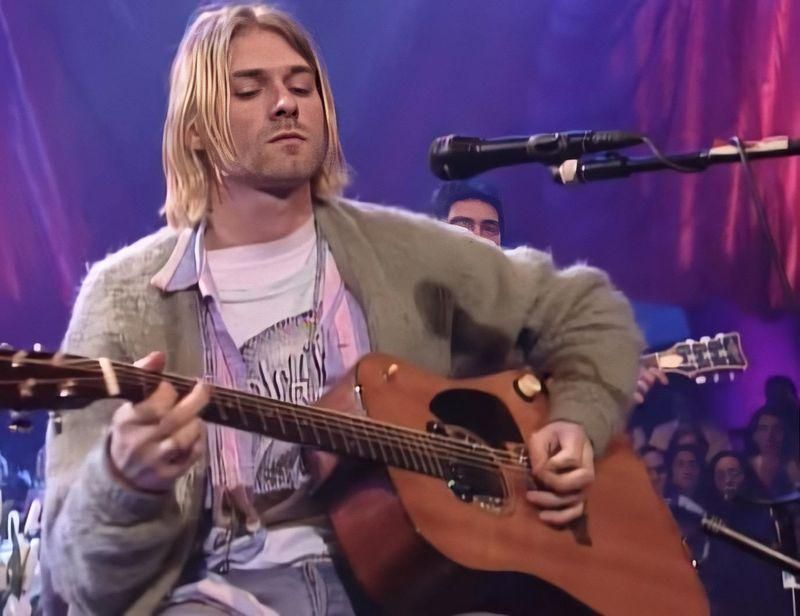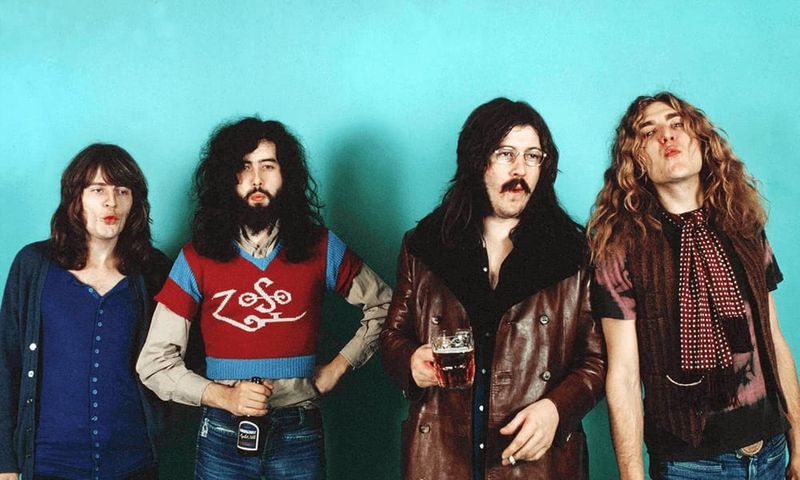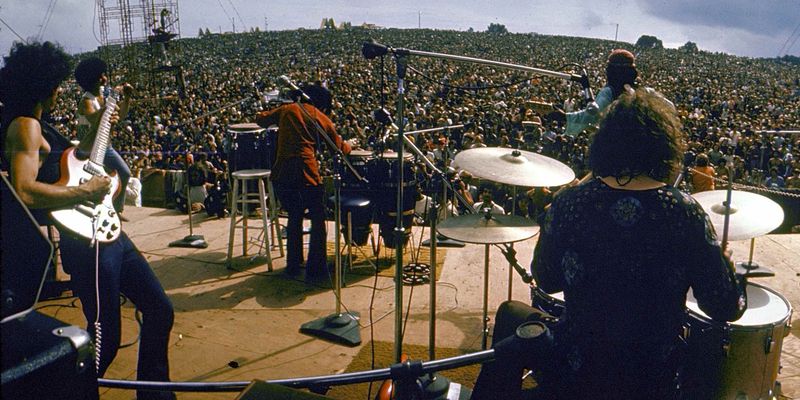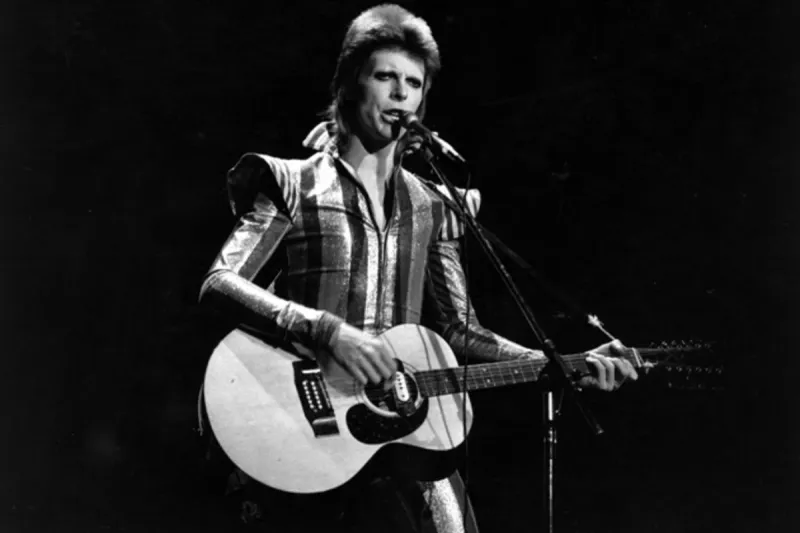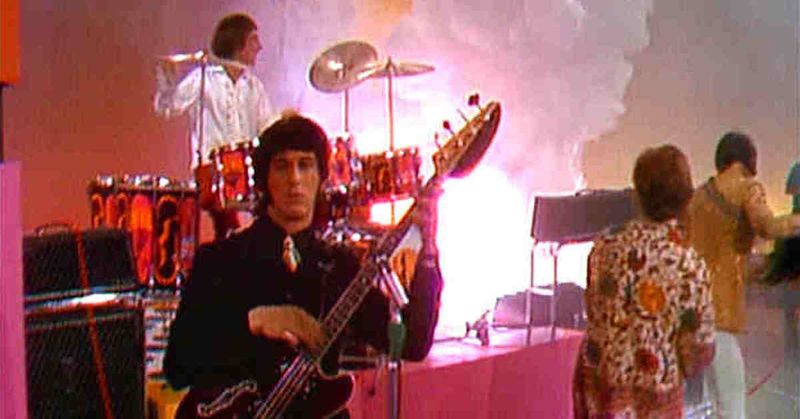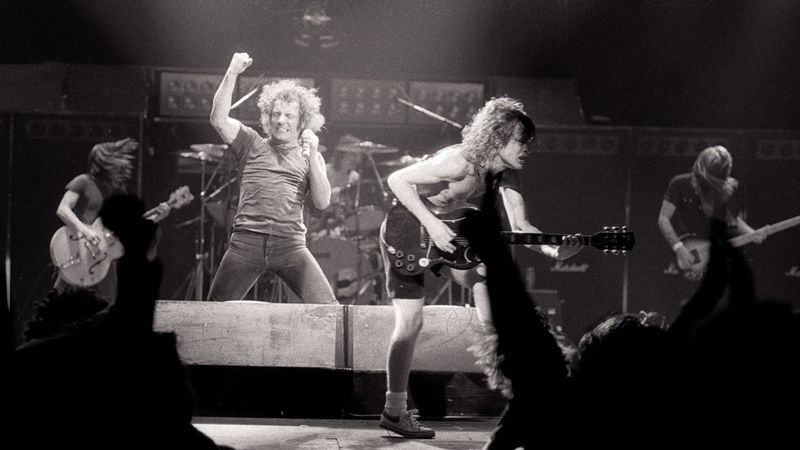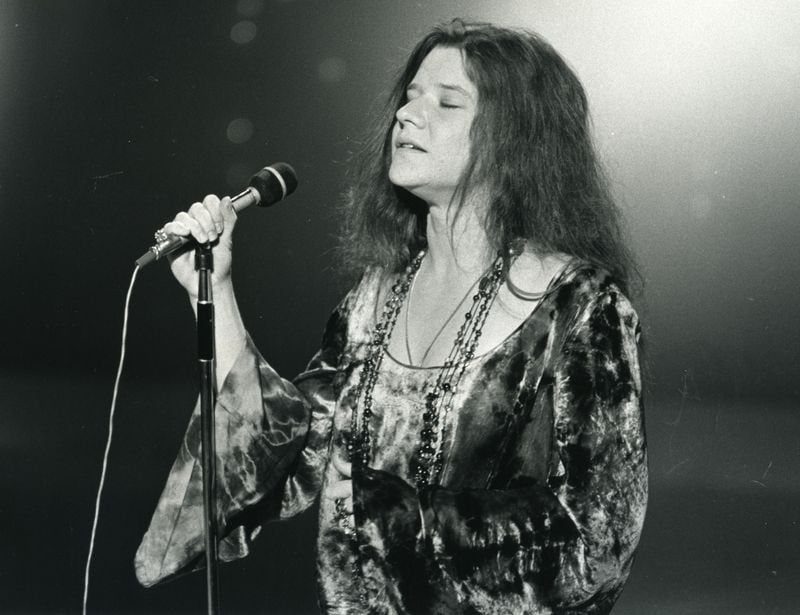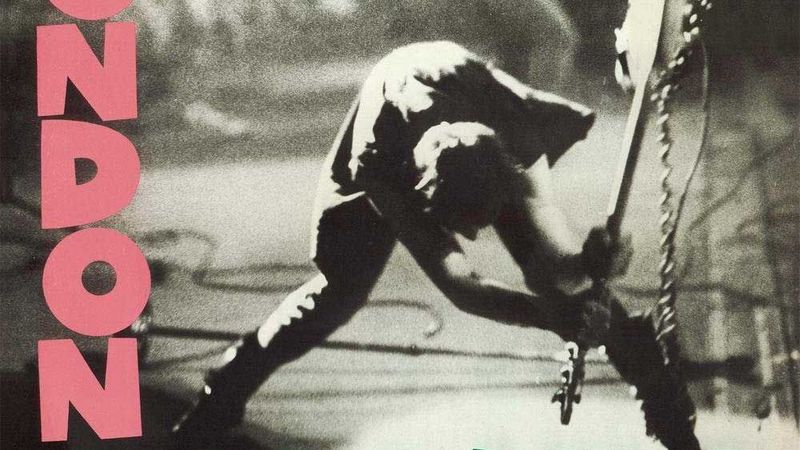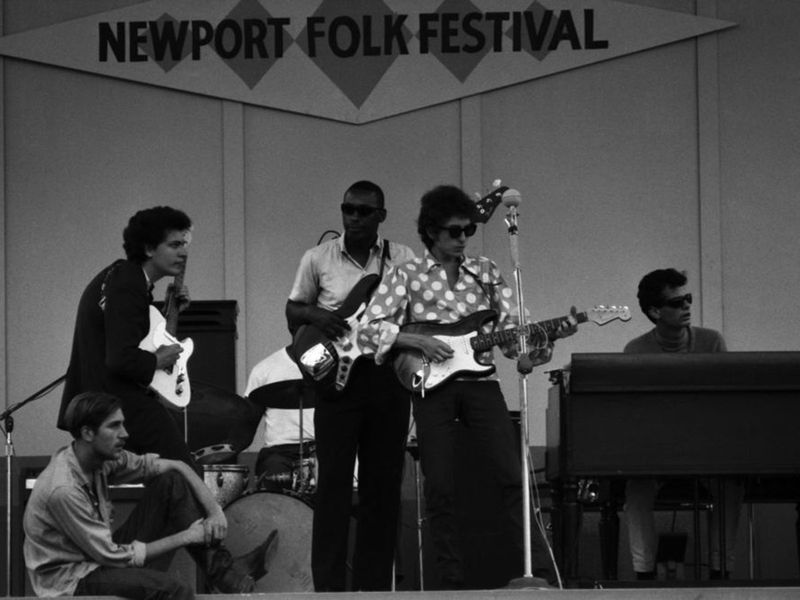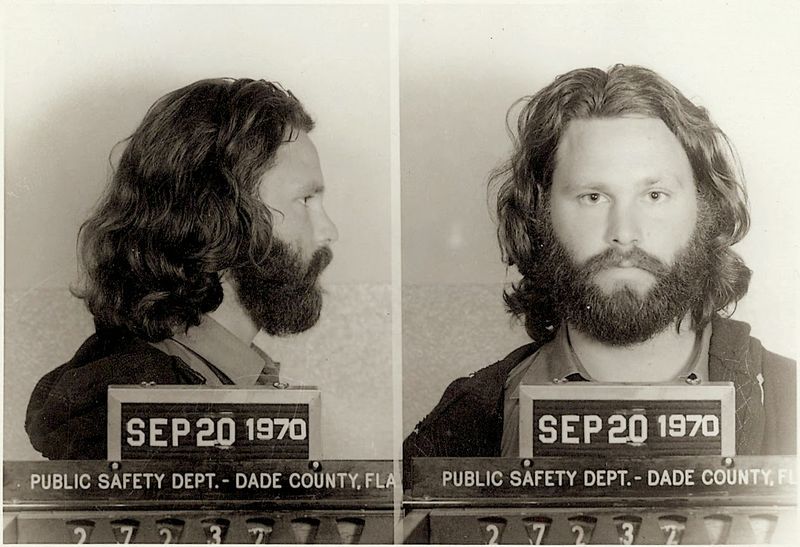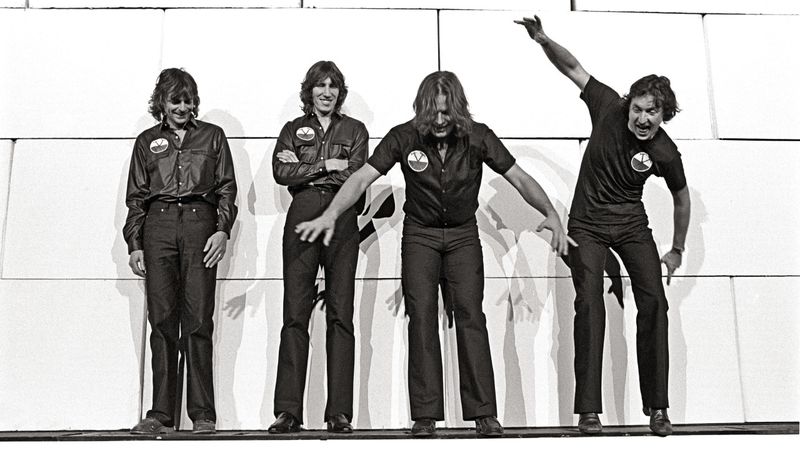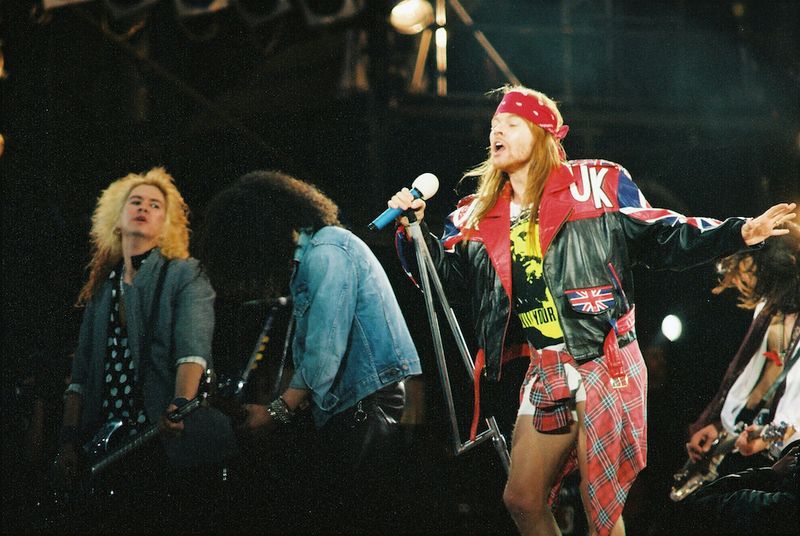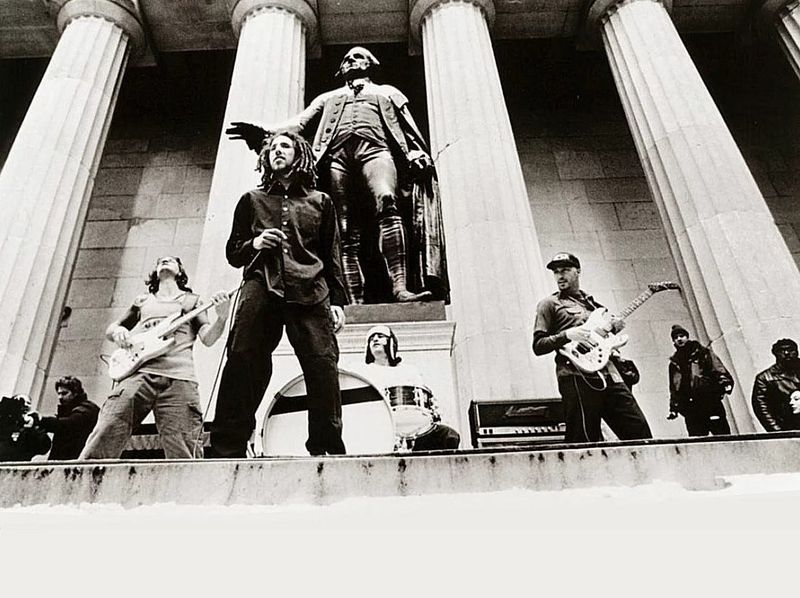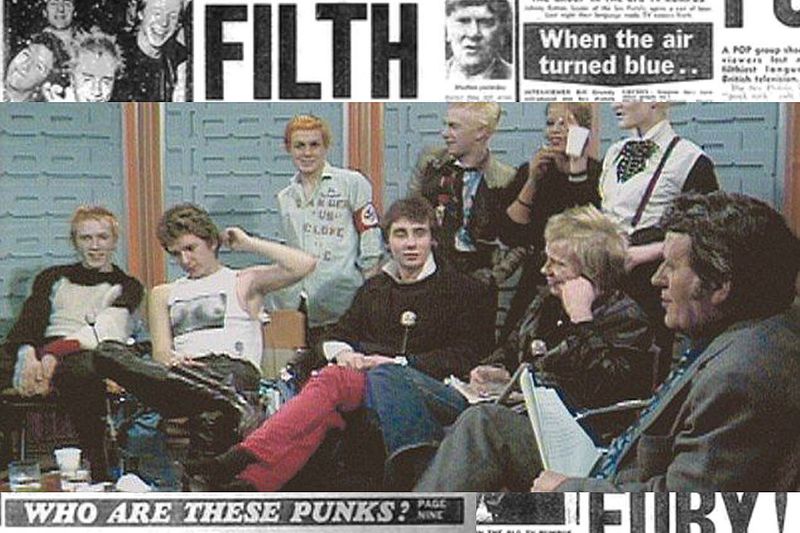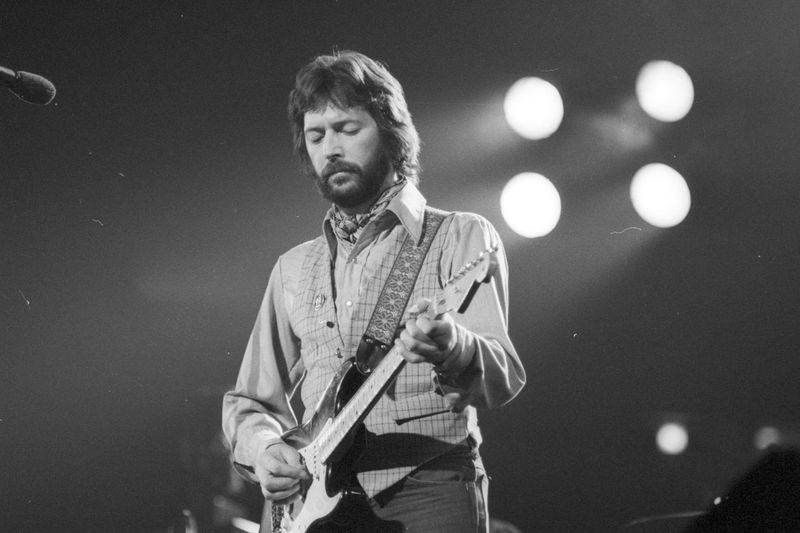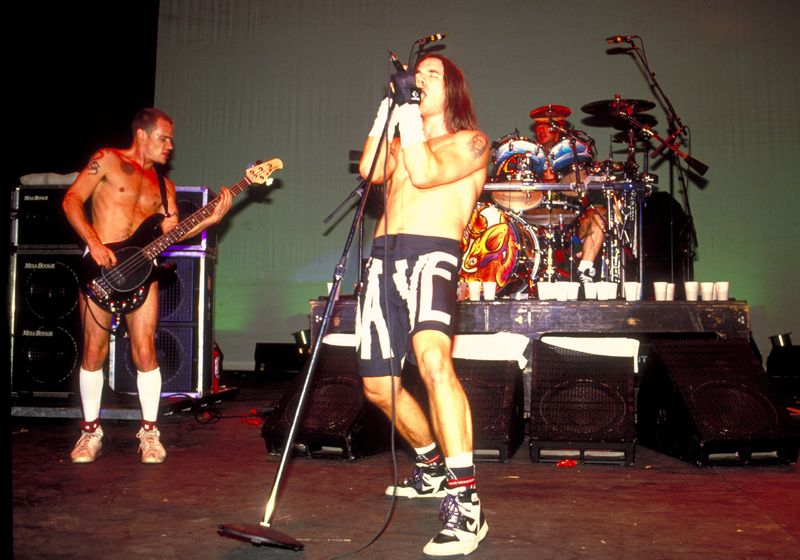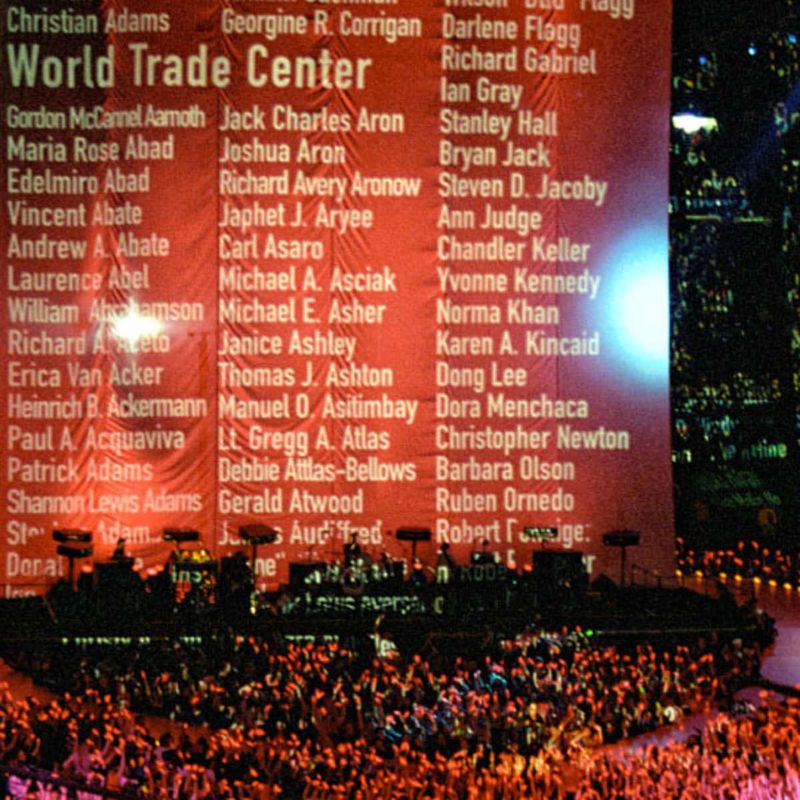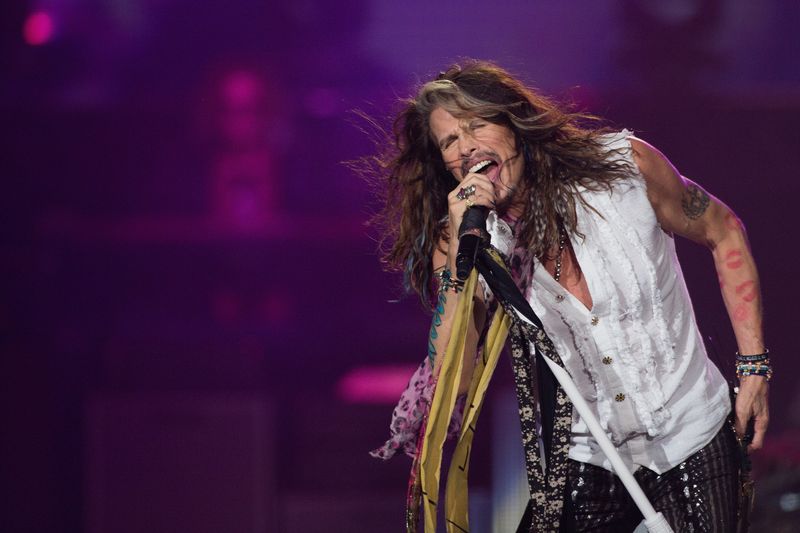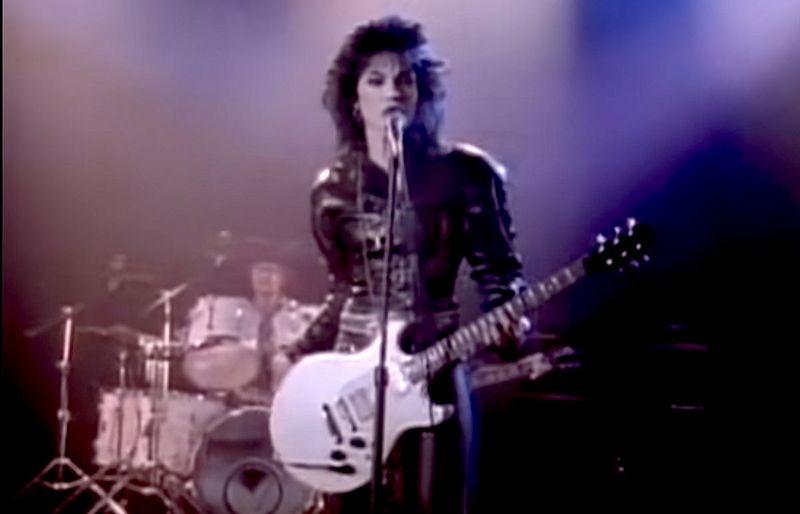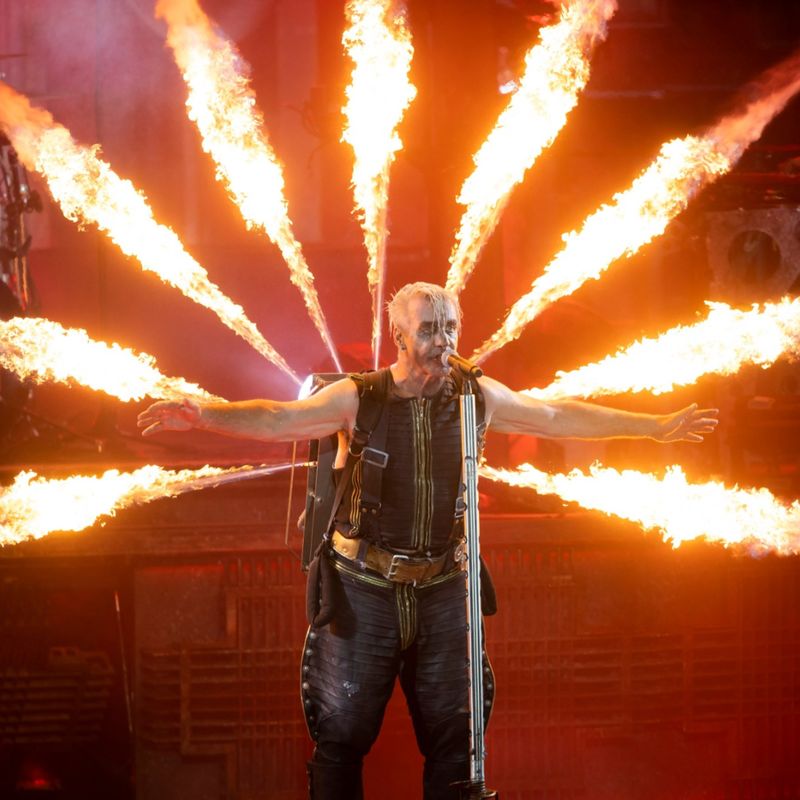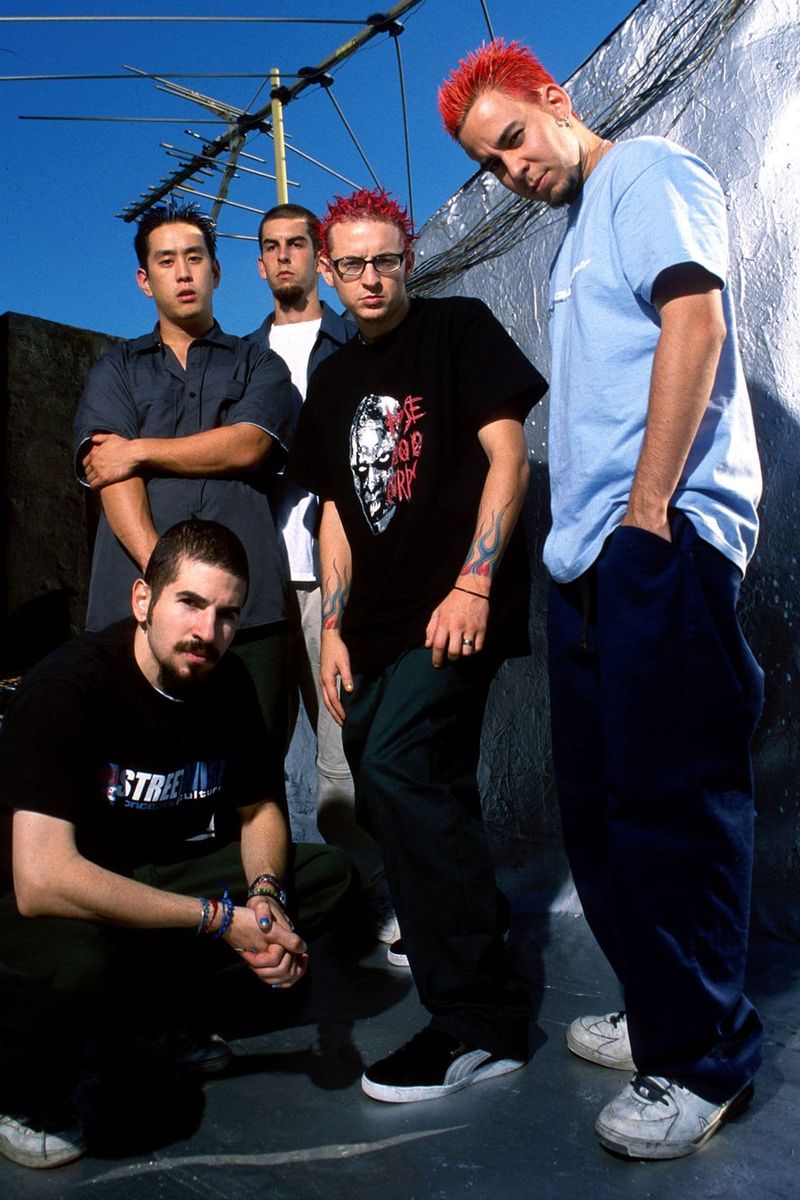Rock ‘n’ roll isn’t just about killer riffs and head-banging anthems—it’s a wild ride of rebellion, shock, and cultural milestones. From epic performances to jaw-dropping controversies, these are the moments rock legends etched their names into history books… sometimes with a scream, sometimes with a scandal.
1. The Beatles Play on a Rooftop (1969)
On a chilly January day in 1969, The Beatles surprised London with an unannounced live performance from a rooftop. As the first chords echoed down Savile Row, passersby stopped in their tracks.
The impromptu concert became their final public performance, a bittersweet farewell that captivated fans and puzzled onlookers. Their spontaneity sparked joy and chaos, leading to traffic jams and police intervention.
Fun fact: This iconic event was part of their “Let It Be” project, symbolizing a peak and an end to their legendary live shows.
2. Ozzy Osbourne Bites a Bat (1982)
During a 1982 concert, Ozzy Osbourne made headlines for one of rock’s most bizarre moments. Mistaking a real bat for a rubber toy, he bit into it, expecting theatricality but finding reality.
The unexpected crunch led to a health scare, as Osbourne was rushed for rabies shots. This shocking act became a legendary rock anecdote, both infamous and cautionary.
Trivia: This incident didn’t deter the Prince of Darkness from his eccentric stage antics; instead, it cemented his wild reputation.
3. Nirvana Changes Music Forever with Nevermind (1991)
In 1991, Nirvana’s “Nevermind” shook the music world. The album, with its now-iconic cover, catapulted grunge into the mainstream, dethroning glam rock and altering the musical landscape.
“Smells Like Teen Spirit” became an anthem for disaffected youth, resonating with a generation seeking authenticity. Kurt Cobain’s raw vocals and the band’s gritty sound redefined rock.
Interesting fact: The album’s unexpected success surprised even the band, turning them overnight from underground rebels to global icons.
4. Elvis Shakes Up America on Ed Sullivan (1956)
In 1956, Elvis Presley’s appearance on the Ed Sullivan Show marked a seismic cultural shift. His hip-shaking performance was so provocative that cameras captured him only from the waist up.
America was both scandalized and mesmerized, as Elvis broke the mold of traditional entertainment. This televised moment signaled the dawn of a new era in music and popular culture.
Fun fact: Despite initial reluctance, Sullivan booked Elvis for a record fee, recognizing his undeniable magnetism.
5. Queen’s Live Aid Set Becomes Legendary (1985)
At Live Aid in 1985, Queen delivered a performance so electrifying, it’s hailed as the greatest live show ever. Freddie Mercury commanded the stage, engaging the 72,000-strong crowd with sheer charisma.
Their 20-minute set was a masterclass in live music, proving Queen’s unparalleled ability to captivate an audience. Mercury’s voice soared, uniting fans in a moment of pure rock magic.
Did you know? This performance reignited Queen’s career, showcasing their enduring legacy.
6. Metallica and Napster Battle It Out (2000)
In 2000, Metallica waged war against Napster, challenging the burgeoning digital music landscape. Drummer Lars Ulrich spearheaded the legal battle, representing artists’ rights in a rapidly changing industry.
Their stand divided fans, sparking debates about the future of music sharing. The lawsuit resulted in Napster’s shutdown, but also highlighted the need for new business models.
Interesting fact: This controversy marked a pivotal moment in music distribution, forever altering how fans access music.
7. The Rolling Stones Play in Cuba (2016)
In 2016, The Rolling Stones made history by performing in Cuba, a country where their music was once banned. The concert drew hundreds of thousands, celebrating rock’s triumphant return.
This event signaled a cultural shift, as generations of Cuban fans finally experienced the band’s legendary sound live. Mick Jagger’s iconic energy transcended political boundaries, uniting fans in a joyous celebration.
Did you know? This concert was free, emphasizing music’s power to unite and heal.
8. Jimi Hendrix Sets His Guitar on Fire (1967)
In 1967, at the Monterey Pop Festival, Jimi Hendrix did the unthinkable. With a mischievous grin, he doused his guitar in lighter fluid and set it aflame. The crowd watched in awe as the flames danced to the rhythm of his music.
As the guitar blazed, Hendrix smashed it to pieces, forever embedding this act into rock folklore. This wasn’t just destruction; it was art, rebellion, and a testament to his fiery spirit.
Did you know? Hendrix’s iconic move was a statement against the establishment, a fiery beacon of the counterculture movement.
9. Kurt Cobain’s MTV Unplugged (1993)
In 1993, Kurt Cobain delivered a hauntingly intimate performance on MTV Unplugged. Stripped of distortion, Nirvana’s set showcased Cobain’s emotional depth and raw vulnerability.
The understated elegance of songs like “About a Girl” captivated viewers, offering a poignant glimpse into Cobain’s soul. This performance became a defining moment in grunge history.
Trivia: The setlist included covers of lesser-known tracks, highlighting Cobain’s eclectic musical influences.
10. Led Zeppelin Destroys Hotel Rooms (Multiple Years)
Led Zeppelin earned notoriety not just for their music, but their hotel escapades. Infamous tales of televisions tossed and motorcycles ridden down hallways painted a picture of rockstar excess.
These anarchic acts, while shocking, symbolized the untamed spirit of 70s rock. Led Zeppelin’s hotel destruction has become the stuff of legend, etching their wild lifestyle into rock mythology.
Fun fact: Despite the chaos, the band’s musical legacy remains untarnished, celebrated for its brilliance and innovation.
11. Woodstock (1969)
Woodstock 1969 epitomized the spirit of an era—three days of peace, love, and music. Half a million people gathered at Max Yasgur’s farm, creating a cultural phenomenon.
With performances from legends like Jimi Hendrix and Janis Joplin, Woodstock became the emblem of counterculture. Despite logistical chaos, its legacy as a symbol of unity and artistic freedom endures.
Did you know? The event was initially a for-profit venture but ended as a free concert due to overwhelming attendance.
12. David Bowie Kills Ziggy Stardust (1973)
In 1973, David Bowie shocked fans by retiring his Ziggy Stardust persona on stage. This dramatic announcement stunned audiences, marking the end of an era.
Ziggy, Bowie’s androgynous alien rock star, had revolutionized music with its flamboyance and theatricality. Killing off Ziggy highlighted Bowie’s commitment to artistic evolution and reinvention.
Trivia: Bowie’s decision inspired countless artists to embrace change as a vital component of creativity.
13. The Who’s Drum Explosion on Live TV (1967)
In 1967, The Who’s drummer, Keith Moon, took rock rebellion to a new level on live television. During an appearance on The Smothers Brothers Comedy Hour, he stuffed his drums with explosives.
The resulting blast was so powerful, it allegedly damaged Pete Townshend’s hearing. This audacious act showcased Moon’s anarchic spirit, sealing The Who’s reputation for wild performances.
Fun fact: The explosion caused chaos on set, becoming an unforgettable moment in TV history.
14. AC/DC Goes Back in Black After Tragedy (1980)
In 1980, AC/DC faced a crossroads following the death of lead singer Bon Scott. Instead of folding, they returned with “Back in Black,” a tribute to their fallen comrade.
The album’s colossal success, marked by hits like “You Shook Me All Night Long,” solidified AC/DC’s place in rock history. It stands as one of the best-selling albums ever.
Did you know? The band recorded in the Bahamas, choosing the location for its isolation and inspiration.
15. Janis Joplin’s Gritty Goodbye (1970)
Janis Joplin’s final recordings in 1970 offered a raw and soulful glimpse into her artistry. Her voice, powerful yet vulnerable, spoke of heartache and resilience.
These sessions produced tracks that became haunting reminders of her immense talent and untimely loss. Joplin’s gritty farewell left an indelible mark on rock history.
Fun fact: The posthumously released album “Pearl” showcased her vocal range and emotional depth, solidifying her legacy.
16. The Clash Break Genre Rules with London Calling (1979)
In 1979, The Clash released “London Calling,” an album that defied genre boundaries. Punk, reggae, and rockabilly fused seamlessly, challenging musical norms.
The title track’s bold lyrics and infectious rhythm captured the spirit of a restless generation. The Clash’s innovative approach redefined what rock music could be.
Did you know? The album cover features a photo of bassist Paul Simonon smashing his guitar, embodying the band’s rebellious ethos.
17. Bob Dylan Goes Electric (1965)
At the Newport Folk Festival in 1965, Bob Dylan made a bold move that divided fans and critics. Trading his acoustic guitar for an electric one, he shocked the folk music community.
The booing crowd was unprepared for this revolutionary shift, but Dylan’s decision changed music forever. His electrifying performance symbolized a new direction for rock and folk.
Fun fact: Despite initial backlash, Dylan’s electric era opened doors for countless musicians to explore new sounds.
18. Jim Morrison Arrested Mid-Concert (1969)
In 1969, The Doors’ frontman Jim Morrison was arrested during a Miami concert, a headline-grabbing event that fueled his wild-child persona. His on-stage antics pushed boundaries, leading to obscenity charges.
The incident captured the rebellious essence of 60s rock, as Morrison’s defiance became a symbol of artistic freedom. Fans rallied, seeing him as a martyr for expression.
Did you know? Morrison’s legal battles only added to his enigmatic legacy, cementing him as a rock icon.
19. Pink Floyd Builds The Wall (1979)
In 1979, Pink Floyd released “The Wall,” a concept album that transformed into a monumental live spectacle. The elaborate set design and thematic depth pushed the boundaries of rock theatrics.
The album’s exploration of isolation and authoritarianism struck a chord, becoming a timeless masterpiece. Its live performances, with towering walls and intense visuals, set a new standard for concerts.
Fun fact: The Berlin Wall’s fall in 1989 added layers of meaning to the album’s legacy.
20. Guns N’ Roses’ Epic Delays and Rants (Early ’90s)
In the early ’90s, Guns N’ Roses concerts were notorious for Axl Rose’s epic delays and rants. Fans waited for hours, fueling an unpredictable atmosphere.
These chaotic shows became part of the band’s allure, as Rose’s volatile personality kept audiences on edge. While frustrating, the tension added to the band’s rock ‘n’ roll mystique.
Did you know? Despite the unpredictability, Guns N’ Roses remained a top draw, their drama adding to the legend.
21. Rage Against the Machine Protest Wall Street (2000)
In 2000, Rage Against the Machine staged a defiant protest concert outside the New York Stock Exchange. Their powerful performance was a direct challenge to corporate greed.
The impromptu show caused chaos, drawing a huge crowd and nearly inciting a riot. The band’s message resonated with fans, amplifying their anti-establishment ethos.
Fun fact: The event was filmed for a music video, capturing the band’s raw energy and commitment to activism.
22. Mick Jagger Becomes Knighted (2003)
In 2003, rock’s quintessential bad boy, Mick Jagger, was knighted by the British monarchy. This unlikely accolade marked a full-circle moment for the Rolling Stones’ frontman.
Jagger’s transformation from rebellious rocker to Sir Mick highlighted the enduring impact of his music and charisma. His knighthood symbolized rock’s acceptance into mainstream culture.
Did you know? Despite mixed reactions, Jagger’s knighthood celebrated his contributions to music and entertainment.
23. The Se* Pistols Drop an F-Bomb on Live TV (1976)
In 1976, the Se* Pistols shocked Britain by swearing on live television. The infamous interview on Bill Grundy’s show thrust punk into the national spotlight.
The band’s brazen attitude and disregard for convention sparked outrage, cementing their status as public enemies. This unfiltered moment became a defining snapshot of punk rebellion.
Fun fact: The scandal propelled the Se* Pistols to fame, despite—or perhaps because of—the controversy.
24. Eric Clapton Inspires a Guitar God Generation
In the 1960s, Eric Clapton’s virtuosic guitar playing inspired a generation of musicians. “Clapton is God” graffiti appeared across London, reflecting his near-mythic status.
His seamless blending of blues and rock set new standards for guitarists, influencing countless artists. Clapton’s emotive style and technical prowess redefined what was possible with an electric guitar.
Trivia: Clapton’s time with bands like Cream and The Yardbirds solidified his reputation as a guitar legend.
25. Red Hot Chili Peppers Rock Out in Socks… Only Socks (1990s)
In the 1990s, the Red Hot Chili Peppers became infamous for performing onstage wearing nothing but strategically placed socks. This audacious style choice captured their wild, boundary-pushing spirit.
Their high-energy performances, combined with funk-infused rock, left audiences both shocked and entertained. The sock-only attire became a hallmark of their irreverent approach to music and performance.
Did you know? The band often utilized humor and shock value, making them icons of the alternative rock scene.
26. U2 Plays Super Bowl with a 9/11 Tribute (2002)
In 2002, U2 delivered an emotional Super Bowl halftime show, paying tribute to 9/11 victims. Bono’s powerful performance featured the names of the fallen projected on a towering screen.
The poignant moment united a global audience in remembrance and healing. U2’s music and message resonated deeply, showcasing rock’s power to console and inspire.
Fun fact: This performance is often cited as one of the greatest Super Bowl halftime shows in history.
27. Steven Tyler’s Scarf Game Becomes Iconic
Steven Tyler, Aerosmith’s charismatic frontman, turned the humble scarf into a rock ‘n’ roll symbol. Draped over microphone stands, his flamboyant scarves became as iconic as his wide vocal range.
Tyler’s unique style added visual flair to Aerosmith’s dynamic performances, capturing fans’ imaginations. The scarves, often adorned with feathers and fringe, became synonymous with his stage persona.
Trivia: Tyler’s fashion sense influenced countless musicians, proving that accessories can rock as hard as the music.
28. Joan Jett Breaks the Boys’ Club
In the 1980s, Joan Jett shattered gender norms with her hit “I Love Rock ‘n Roll.” Her fierce attitude and signature leather jacket defied the male-dominated rock scene.
Jett’s success proved that women could rock just as hard, inspiring future generations of female musicians. Her music remains a testament to resilience and rebellion.
Did you know? Jett was initially rejected by record labels, but her persistence led to a groundbreaking career.
29. Rammstein’s Pyro Show Turns Up the Heat
Rammstein took live performance to another level with their intense pyrotechnics. Flames and explosions synchronized with their industrial metal sound, creating a sensory spectacle.
Their fiery shows are renowned for pushing boundaries, leaving audiences exhilarated and awestruck. Rammstein’s innovative approach to stagecraft set new standards for live rock performances.
Did you know? The band’s pyro mastery extends to using custom-built equipment, ensuring every show is a unique experience.
30. Linkin Park Blends Genres Seamlessly (2000)
In 2000, Linkin Park’s debut album “Hybrid Theory” revolutionized music by blending rock, rap, and electronic elements. Their unique sound resonated with a generation seeking expression and identity.
Hits like “In the End” showcased their ability to seamlessly mix genres, creating a new wave of alternative rock. Linkin Park’s innovative approach inspired countless bands.
Did you know? “Hybrid Theory” remains one of the best-selling debut albums of the 21st century, cementing their place in music history.
